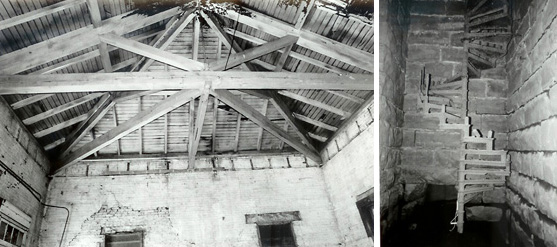Back in the good old days, citizens of Bowling Green disposed of their waste in “sinks,” underground caverns and streams reached by drilling holes in the rock; they then drew their water from household wells often contaminated by those same sinks. The result was a close acquaintance with cholera, typhoid, dysentery and, one suspects, really bad coffee.
To tap a better source, the city inaugurated a municipal water supply system in 1869, building a pump house and engine room at the foot of Chestnut Street on the banks of the Barren River. Additions to the water works over the years included another pump house and a sedimentation basin, constructed in 1927. When further renovation plans in 2000 called for the demolition of the 1869 structure, Bowling Green Municipal Utilities commissioned the study and documentation of this historic example of public architecture before it disappeared.
The resulting report, prepared by Kurt H. Fiegel and detailing the construction, history and significance of the 1869 water works, is now part of the Manuscripts & Folklife Archives collections of WKU’s Special Collections Library. Chronicling the original plans for the facility, Fiegel relates the supervisory role of engineer Charles Hermany, who assisted in the design of the Louisville Water Tower (1856), now the oldest existing structure of its type. Accompanying Fiegel’s report are more than 25 photos showing architectural and construction features of the 1869 pump house, including its brick work, truss system, and cast iron spiral staircase–aspects of a now-vanished Bowling Green landmark that will interest students of both local history and engineering.
Click here to access a finding aid for this report. Click here and here for additional collections relating to the Bowling Green Water Works. For other collections documenting local architecture and municipal history, search TopSCHOLAR and KenCat.


